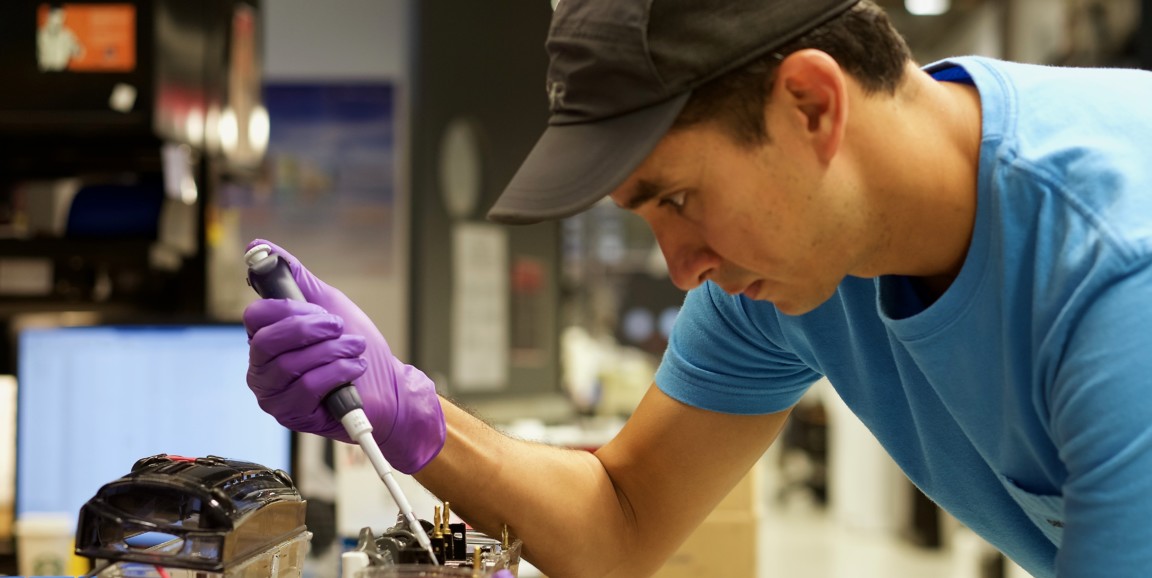Carlos Gonzalez took a long, winding road to Stanford, but he's happy to have found his way here. While working as a graphic artist, he became unexpectedly engrossed in the intersection of biology and philosophy. He's now in the fourth year of his PhD in chemical and systems biology; I met up with him to learn more.
What brought you to Stanford?
I’m definitely what I would call a non-traditional student; I had a whole career before doing this. I started off as a graphic artist, but then I started reading a lot of philosophy. That led me to think about the interactions between the mind and the body, but I really had no framework to pose questions because a lot of those interactions are biologically driven – I had no biology background whatsoever. I went to a local community college, took every class they had, then moved on to California State University, San Marcos where I met an advisor who pushed me to pursue a PhD.
So philosophy was your bridge into biology?
I just got really interested in how people formed their worldviews. I got into formal argumentation and really liked how understanding philosophical texts helped me make more sense of people's arguments, and vice versa. I became interested in popular science that interfaces with some philosophical concept. Say like [books from] Oliver Sacks, MD or V.S. Ramachandran, MBBS, PhD — these neuroscience books that pull you from a local level of 'you’re just a person' to 'these are your neurons' and expands from there.
What are you currently working on?
I use mass spectrometry to characterize host-microbiome interactions, specifically the gut microbiome. I have a couple projects, but I guess my 'baby' is looking at whether the host uses the adaptive immune system to catalogue what is in its gut. How does the host know what’s there? We know it uses MHC2 protein complexes, but we don’t know to what extent. If we better understand the mechanisms by which the immune system recognizes microbes, we can leverage that information to help fight disease.
What’s your favorite book?
I try to read Lord of the Rings once a year. If I don’t read it, in a sort of self-flagellation, I watch all the films, the extended versions, without taking a break.
Do you have a favorite type of food?
I enjoy really good Korean food and dim sum.
Have you gone on any fun trips recently?
Me and some of my cohort hiked Mount Whitney in one day – it’s the highest mountain in the contiguous U.S., almost 15,000 feet. You can do it one day, but most intelligent people go up halfway and camp then get to the peak in the early, early morning to catch the sunrise. We didn’t do that, we did in one long day, like 20-something miles, up and down. But it was awesome. Every type of terrain you can imagine all in one shot.
Are you doing any graphic art?
Occasionally I also make flyers for the School of Medicine and I teach classes on campus to scientists about scientific illustration, figure making and stuff like that. It’s cool to use the skills you’ve had for so long for something new.
Stars of Stanford Medicine introduces readers to standout scholars in the School of Medicine.
Photo by Kavya Swaminathan




